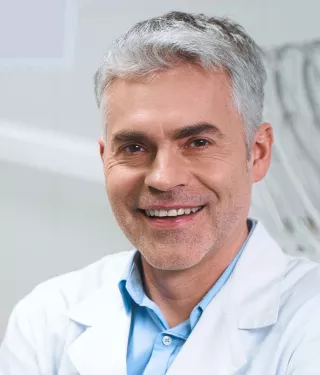
Why synthetic bone grafts could be a beneficial solution among the latest trends in dental bone grafting
- 1. On the need of bone grafting materials for successful dental treatments
- 2. Why are synthetic bone grafts a beneficial solution among the latest trends …
- 3. What are the recent developments in synthetic bone grafts for dental applica…
- 4. Synthetic bone grafting can boost your revenue stream
- 5. Allow innovative research and development to guide your choice of synthetic …
On the need of bone grafting materials for successful dental treatments
Bone is a remarkable tissue with the capacity to self-regenerate.
It is estimated that the entire human skeleton is renewed every five to ten years. However, this capacity is limited and, in compromised clinical situations, the self-regeneration mechanism fails, leading to bone resorption.
In those cases where self-healing would not be possible, the use of a material acting as a bridge to support bone formation is needed.
As you are aware, different solutions of natural origin are commonly used in dentistry such as intra/extraoral autografts, xenografts, or allografts. Nevertheless, it appears that patients and users may prefer synthetic solutions over grafts derived from porcine, bovine, and human tissues due to ethical, religious, dietary, or cultural concerns.1
Why are synthetic bone grafts a beneficial solution among the latest trends for dental bone grafting?
Implant dentistry has been and continues to be the focal point for grafting innovation. As a dental professional you are aware of the required bone volume to ensure successful implant placement.
Synthetic grafts arise as a promising option due to their ease of availability, lower production cost compared to xenogenic material and the possibility for the manufacturer to tune their structure and composition for optimal performance.
Additionally, they represent an increasingly popular alternative to materials of natural origin for various reasons:
– Synthetic bone grafts are free of the negative perceptions associated with the use of human or animal tissue
– Synthetic bone grafts are safe and easy to produce
- Synthetic bone grafts can be compatible with some religious beliefs and cultural concerns
– Synthetic bone grafts have become more advanced as a result of extensive research and development.
The main available synthetic solutions include:
– Hydroxyapatite and tricalcium phosphate ceramics alone or in combination (biphasic grafts)
– Calcium phosphate and calcium sulfates cements
– Polymer
– Bioglasses
– Composite (consisting of a mix of previous material with organic and inorganic substances).
What are the recent developments in synthetic bone grafts for dental applications?
When addressing the challenge of designing the ideal bone grafts, the material should be:
– biocompatible and osteoconductive to support direct bone formation on its surface while avoiding foreign body reactions;
– able to create a favorable environment for the waterfall of biological events to occur leading to effective and healthy regeneration; and
– able to preserve the volume of the defect over time for a successful and predictable treatment.
However, commonly available synthetic bone grafts present a limited bioactivity due to their high crystallinity, low multiscale porosity and limited surface area.2
Various lines of investigation are currently studied, including:
– Cell therapy to incorporate stem cells, growth factors and other biologics to enhance the bone regeneration capacity3
– Inclusion of 3D technologies to create highly customizable and anatomically precise graft adapted to the patient’s need4
– Development of biomaterials closely mimicking natural bone composition and microarchitecture.5
One recent Research & Development trend focuses on the elaboration of biomaterials that closely mimic the natural bone but tuning the properties of those grafts at a nanoscale level. Those properties, such as multiscale porosity, specific surface area and surface topography are highly important as they will directly impact the biological events occurring post grafting such as protein and cells colonization, vascularization, and quality of bone formation.
Synthetic bone grafting can boost your revenue stream
Synthetic bone graft can be of interest to vegans and patients with religious beliefs, who exclude the use of animal-based products.
Perhaps in your experience, some patients react negatively when they learn of traditional bone grafting materials. Such reactions are usually in response to discovering the tissue is farmed from cadavers or animal sources.
Introducing your patients to synthetic bone graft materials could improve implant case acceptance and overall patient experience at your dental practice.
And that translates to an increase in your bottom-line.
It is important to create a compelling narrative around the use of synthetic grafting materials, in the same way you would promote your other services. Provide your patients with supportive information to help them have confidence in alternative graft solutions.
Allow innovative research and development to guide your choice of synthetic bone grafting material
The Nobel Biocare portfolio of regenerative products showcases the latest trends in dental bone grafting. The introduction of creos™️ syntogain paves the way for more innovation.
Dental grafting needs vary from patient to patient. The creos family of bone grafting technology can cover the diverse services you offer as a dental professional including
– Predictability
– Efficacy
– Versatile shaping and positioning
– Attractive design features.
The creos™️ syntogain technology has been added to the Nobel Biocare line of regenerative products.
References
1. Bucchi C, Del Fabbro M, Arias A et al. Multicenter study of patients' preferences and concerns regarding the origin of bone grafts utilized in dentistry. Patient preference and adherence 2019;13:179-185
2. Ginebra M, Espanol M, Maazouz Y, Bergez V. Bioceramics and bone healing. EFORT Open Reviews 2018;3(5):173-183
3. Dam VV, Trimh HA, Rokaya D, Trinh DH. Bone Augmentation for Implant Placement: Recent Advances. International journal of dentistry 2022;2022: 8900940
4. Vidal L, Kampleitner C, Á Brennan M, Hoornaert A, Layrolle P. Reconstruction of Large Skeletal Defects: Current Clinical Therapeutic Strategies and Future Directions Using 3D Printing. Frontiers in bioengineering and biotechnology 2020;8:61
5. Ginebreda I, Koening Jr B, Rivellino Facci Allegrini M. Biomimetic synthetic bone graft in alveolar ridge preservation: 1-¬year RCT results. Clinical Oral Implant Research, Oral Communication 2022;33:3-55